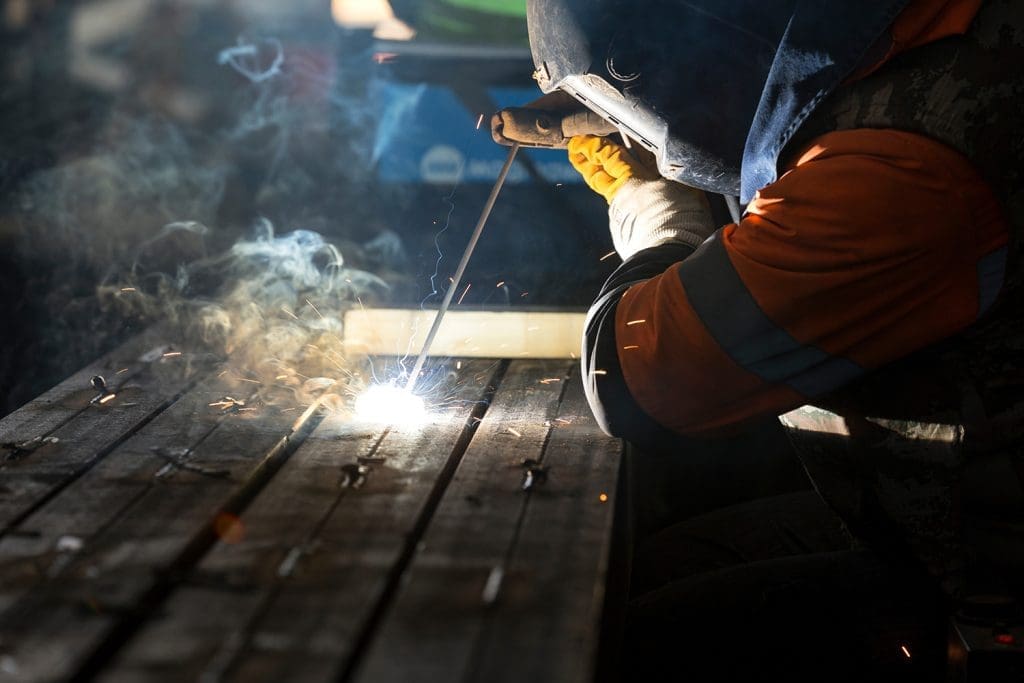Stick welding, or shielded metal arc welding (SMAW), is one of the most reliable and widely used welding techniques. Its versatility and adaptability make it indispensable for various industries, from construction to manufacturing. Understanding stick welding’s capabilities can help you make informed decisions for projects requiring precision and durability.
What Makes Stick Welding Unique?
Stick welding uses a consumable electrode with a flux coating to create strong and reliable welds. The electrode generates an electric arc that melts both the rod and the base material, creating a bond as it cools. The flux coating burns during the process, forming a protective barrier that shields the weld from contaminants like oxygen and nitrogen. This process ensures weld integrity even in challenging environments.
Stick welding doesn’t rely on external shielding gases, unlike other welding techniques. This feature makes it highly practical for outdoor projects or areas with inconsistent weather conditions. Its ability to work on various materials, such as steel, stainless steel, and cast iron, further enhances its value.
The Role of Flux Coating in Stick Welding
In stick welding, the flux coating on the electrode is more than just a protective layer—it’s the cornerstone of the entire welding process. This specialized coating plays a vital role in ensuring the integrity and durability of the weld, making it indispensable for projects that demand high-quality results. By burning during welding, the flux creates a gaseous shield that prevents contaminants like oxygen and nitrogen from interacting with the molten weld pool. This shielding effect is critical in maintaining the structural strength of the weld.
Additionally, the flux coating enhances arc stability, allowing for better control during the welding process. This control is especially beneficial in challenging environments or when precision is required. The slag it forms after welding serves as a secondary shield, protecting the weld as it cools and solidifies. Once removed, the slag reveals a clean and robust weld ready for use in demanding applications. Understanding the significance of flux coating can help ensure that stick welding delivers the reliable and lasting results industries depend on.
The flux coating on the electrode is a defining feature of stick welding. It serves several critical purposes:
- Shielding: Protects the weld pool from atmospheric contamination.
- Arc Stability: Ensures a smooth and controlled welding process.
- Slag Formation: Creates a protective layer over the weld, which is removed after cooling to reveal a clean joint.
This protective layer is especially crucial in maintaining the weld’s strength and appearance, making stick welding an excellent choice for projects requiring durability.
Why Stick Welding Is Ideal for Industrial Applications
In the world of industrial fabrication and repair, finding a welding method that balances reliability, versatility, and cost-efficiency is critical. Stick welding excels in meeting these demands, making it a preferred choice for numerous applications across various industries. Its ability to create strong, lasting welds in both controlled environments and challenging outdoor conditions sets it apart from other welding techniques.
Furthermore, the process is highly adaptable, allowing for seamless work on different materials and thicknesses without requiring specialized equipment. These advantages make stick welding an indispensable tool for businesses and professionals aiming to complete projects efficiently and with high-quality results. It’s an optimal solution for:
- Structural Welding: Providing reliable bonds for beams, pipes, and other structural components.
- Repair Work: Tackling maintenance or on-site repairs, even in remote or hard-to-access locations.
- Heavy-Duty Projects: Welding thicker materials without requiring complex machinery.
Its portability and effectiveness in various environments—from workshops to construction sites—make it a go-to method for industrial and commercial needs.
Challenges of Stick Welding and How Experts Can Help
While stick welding offers numerous advantages, achieving the best results requires skill and experience. Common challenges include:
- Slag Removal: Ensuring a clean finish by properly chipping away slag.
- Electrode Selection: Choosing the right electrode for the material and project requirements.
- Consistent Technique: Maintaining the correct angle and speed to prevent defects like spatter or porosity.
Partnering with professionals specializing in stick welding can save you time and ensure a flawless outcome. Experienced welders understand how to navigate these challenges, delivering results that meet your specifications.
Consult the Experts for All Your Stick Welding Needs
Stick welding is a powerful and versatile technique that requires expertise to unlock its full potential. Whether your project involves structural components, equipment repair, or custom fabrication, working with skilled professionals ensures the highest quality and durability.
At Brandywine Valley Fabricators, we specialize in delivering exceptional welding solutions tailored to your needs. Our team combines technical expertise with industry-leading tools to provide reliable and efficient results. Contact us today to learn how our stick welding services can bring your project to life!

